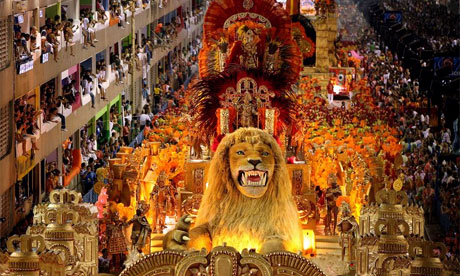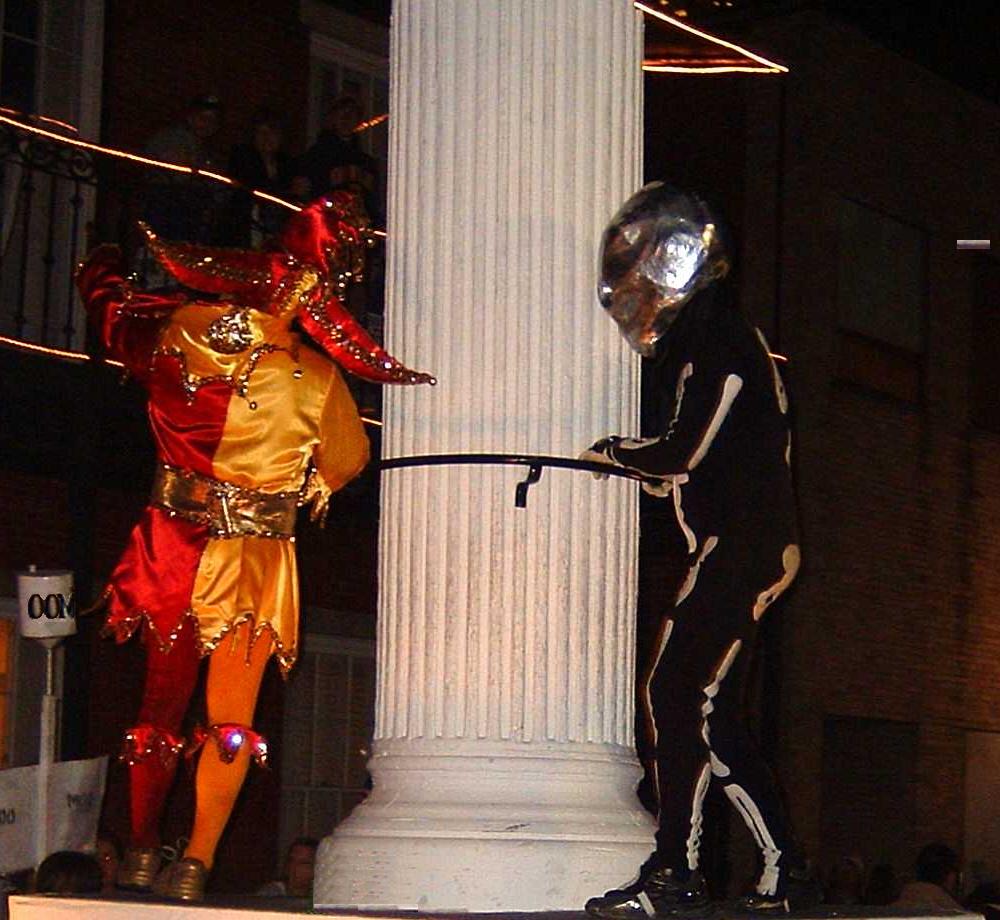Brazil Carnival
Top Five Mardi Gras Outside of New Orleans!
0I’ve been fortunate to celebrate Mardi Gras in France, Cajun Country, Baton Rouge and Mobile. Mardi Gras in New Orleans is number 1 in my book.
I’m a huge fan of Mardi Gras anywhere! I really don’t care, as long as the effort remains sincere. I prefer Mardi Gras in New Orleans, of course. Even when I lived away I returned for most Carnival seasons. The biggest difference between New Orleans and all the other Mardi Gras? New Orleans retains a fair share of risque behavior, especially in the French Quarter and Marigny. The parade I roll with Krewe du Vieux, is the most ribald parade in existence.
# 2
Is Rio the Carnival Capital of the World? Rio’s spectacle draws a half million visitors annually, and the entire Carnival crowd is estimated to be over 2 million people for the final five days of the Carnival season.
The highlight of Rio’s Carnival is the Samba parade, which takes place each year at the Sambodromo, a special stadium built specifically to house the annual parade. Samba schools—social clubs consisting of 3,000 to 5,000 members, which represent a particular neighborhood in Rio—spend all year preparing for the parade, and compete with other schools based on their dancing, costumes and music. The competition takes place over several nights, with five or six schools parading each night. Brazil Carnivale is fabulous, just fabulous.
# 3
There is only one Mardi Gras in America older than the New Orleans Mardi Gras, and that is Mobile’s, only 144 miles away. Begun by Nicholas Langlois of France in 1703, fifteen years before New Orleans was founded, although today the Crescent City’s celebration is much more widely known. In Mobile, the first capital of French Louisiana (1702), the festival began as a French Catholic tradition, as do Mardi Gras around the world.
Mardi Gras in Mobile has now evolved into a mainstream multi-week celebration across the spectrum of cultures in Mobile, becoming school holidays for the final Monday and Tuesday (some include Wednesday),regardless of religious affiliation. Much the same has happened in New Orleans. In downtown Mobile, there are 38 parades over 3 weeks. Baldwin County has a dozen major parades, and outside of downtown there are several parades as well.
# 4
Cajun Mardi Gras
The only place I’d move to if I had to leave New Orleans is Lafayette. I’ve spent many a good time in Lafayette, eating the amazing food, going to the fantastic festivals, hearing the Cajun and Zydeco hybrid bands, and meeting the wonderful people. New Orleans is Creole Louisiana and Lafayette is Cajun Louisiana. They have their own unique Cajun Mardi Gras with one of a kind Cajun traditions.
Courir de Mardi Gras means Mardi Gras Run. The event is held in many Cajun communities on Fat Tuesday.
Barry Ancelet, Cajun historian and head of the University of Louisiana at Lafayette Folklore Department, has explained the origin of the Courir as being in rural medieval France: It’s an early springtime renewal and essentially a way for communities to celebrate and find themselves.
Southwest Louisiana shares in this tradition, collecting ingredients for a communal gumbo is the theme behind the run.The Imperial Calcasieu Museum, the largest Mardi Gras museum in the United States, tells the global history of the celebration, along with the best recipes for King Cake and showcases 1,000 costumes. As you wander through the displays, feel free to dance a little fais do-do. Don’t worry about having rhythm. Painted footsteps on the floor will tell you where your feet are supposed to be.
#5
Mardi Gras in Italy
Carnevale is one of Italy’s biggest winter festivals, celebrated in the weeks before Lent. The final day of Carnevale is Martedì Grasso (Mardi Gras – Fat Tuesday), the day before Ash Wednesday and the beginning of Lent. Mardi Gras, along with the Thursday before, called Giovedí Grasso (Fat Thursday), are the main days of Carnival.
Italy is the birthplace of Carnival celebrations, having its origins in the ancient Roman cult of Saturnalia, fertility rites to honor the god Saturn. You can still see the ruins of the Temple of Saturn at the Roman Forum in Rome, where they used to hold sacrifices.
The most famous and typical Carnivals in Italy are in Venice, Viareggio (on the Tuscany coast) and Ivrea (Piedmont).
However, Carnival is celebrated all over Italy: every single city has its events, masquerade balls, costume parties and parades taking place in streets, piazzas and restaurants. Masks, sweets and having fun are the most important things during Carnival: it’s a chance to be happy and cheerful, not only for children, dressed up in costumes.
Wherever you are in Italy in Carnival time, just grab a mask you like and enjoy the celebrations!
Brazilian Drought Threatens Carnival Celebrations!
0Brazil is suffering from the worst drought in over 80 years. Crops are dying from lack of water, millions of Brazilians are short of drinking water, and electrical blackouts are common. The drought has been worsening for over a year and has decimated southeastern Brazil, the nation’s richest and most densely populated region. As the Southern Hemisphere enters into the zenith of its summer season, the drought continues to worsen.
Over a dozen cities and towns in the southeastern state of Minas Gerais have called off or scaled back their Carnival celebrations. Ouro Preto is a city in the state of Minas Gerais, Brazil, a former colonial mining town located in the Serra do Espinhaço mountains and designated a World Heritage Site by UNESCO because of its outstanding Baroque architecture, has been forced to rotate outages to ensure ample water for the 70,000 tourists who descend on Ouro Preto for Carnival.
In Brazil’s largest city, San Paulo, where water levels are alarmingly low, city council member Gilberto Natalini has called on the mayor and state governor to cancel Carnival and other humongous water intensive public events for the foreseeable future. It would be like dancing samba on a funeral, Mr. Natalini said.
Oliveira, with a population of 42,000, has canceled all 2015 festivities due to very low water supplies. They usually receive 20,000 Carnival visitors for its one week long Carnival celebration. The president of Oliveira’s Carnival Commission, Antonio Penido, said, Never in the history of our city has something like this happened. With broken hearts, we made the decision.
When the world thinks of Brazilian Carnival, it is Rio de Janeiro that comes to mind. The most out of this world and over the top version of Carnival will go on as scheduled with some concessions to current events. At least two of the large professional samba schools that create the event are scaling back water elements on their over-sized parade floats.
Light and mirror effects will be utilized instead of water to depict a rushing 20-foot fountain of youth for the Uniao da Ilha do Governador samba school in Rio. Tourism officials in Rio are expecting almost a million Carnival tourists, who are expected to spend three quarters of a billion dollars on all the myriad of tourist restaurants, lodging, souvenirs, transportation and deluxe parade seating and event packages.



